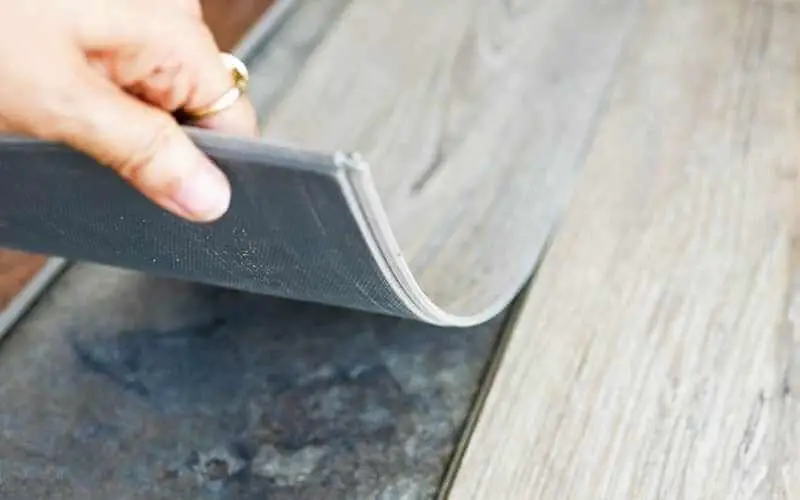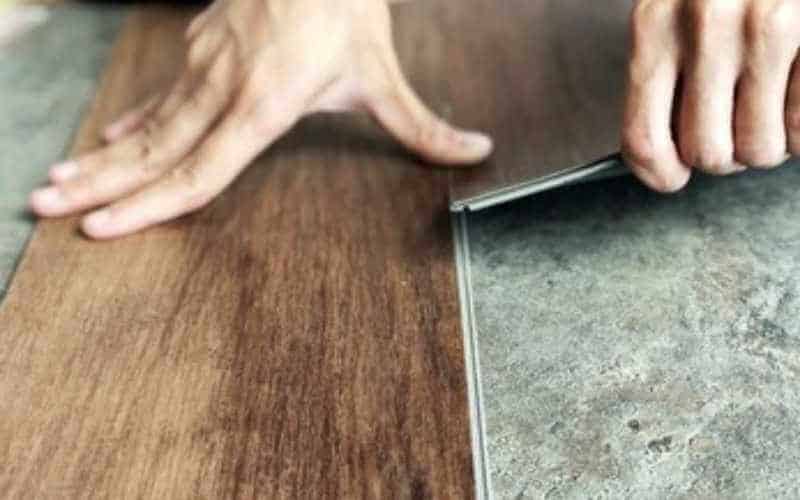Mold can be found not just on your vinyl flooring but sometimes underneath it as well. Mold thrives in areas rich in moisture, like underneath floorboards, and this allows it to grow unchecked for quite a while
It can ruin your flooring if left unchecked for a long period of time and may spread to other areas of the home.
To clean mold under vinyl flooring, you need to clear out the area then seal off the room using a plastic sheet, pull up the baseboard and apply borax solution to the affected area. Finally, vacuum the subfloor and replace any damaged floorboards.
Here’s more detail on how to clean mold under vinyl flooring and prevent the damage it could cause; it involves a few steps that are more effective when the mold growth isn’t widely spread.
How to Clean Mold Under Vinyl Flooring
Table of Contents
Depending on the extent of the mold growth spread, you can clean mold under vinyl flooring yourself, but you may need professional services if dealing with an extensive and widely spread growth.
Tools to have:
- Gloves
- Goggles
- Respirator
- Protective clothing and gears
- Plastic sheets
- Large garbage bags
- Disposable rags
- Tape or nails and hammer
- Box fan
- Dehumidifier
- Two large buckets
- Spray bottle
- Borax
- Scrub brush or broom
- Heat gun (optional)
- Pry bar (optional)
- Chemical stripper (optional)
- Floor scraper (optional)
Step 1: Clear Out the Area
Start by removing all unaffected furniture out of the room. You can store small objects in garbage bags and seal them securely before taking them out.
You may want to dispose of contaminated items that are replaceable objects; you can try to get rid of mold from expensive or personal items that you cannot dispose of, but first, take them out in the sun while you handle the floor first.
Step 2: Seal Off the Room
Seal off the room using plastic sheets, secure them to your doors using nails or duct tape, and then ventilate the area by opening a window
For extra ventilation, place a fan in the window facing outward or place it on the floor facing towards the window, do not place the fan directly towards the moldy areas; to avoid releasing the spores into the air.
Step 3: Pull Up the Baseboards
Remove all contaminated baseboards in the area with the mold growth plus an extra 1-2 feet to ensure you completely eradicate the mold. As you pull up the boards, you may find more affected planks that have to be removed as well.
If the boards have not been severely damaged, you can treat them and reuse them; after pulling them up, you can pile them to one side until you eliminate mold from the subfloor.
Read: How to remove vinyl flooring without damaging it
Step 4: Mix Borax Solution
Mix 1 cup of borax in a large bucket, and fill the spray bottle with the solution; apply this solution on affected areas and wait 10 to 15 minutes to allow the water to saturate the mold and prevent the spores from becoming airborne.
Then go in with a brush and scrub the floor before reapplying more borax solution, then wait another 10 minutes and scrub one more time. Doing this severally is bound to kill the mold and rid them off your floors.
Step 5: Vacuuming
Next, clean the subfloor with a HEPA vacuum to remove the bulk of dead mold. Instead of vacuuming, you can simply rinse over the floors multiple times by using another borax solution and a rag that will be disposed of properly after use.
Make sure not to use too much water so it isn’t soaked through, as this may cause even more mold growth on the subfloor.
Step 6: Spraying the Subfloor
Spray a light layer of borax water on the subflooring, which prevents the reoccurrence of mold. Then shrivel up the mold by turning up the heat or placing a dehumidifier in the room to fasten the drying of the floor. Check after 48 hours to see if there’s still a sign of mold on the subfloor.
Step 7: Replace Damaged Floorboards
Badly affected vinyl floorboards need to be replaced, and it’s a must. Avoid reusing moldy planks as you would only be returning to the point you started. You also need clean or new trim alongside the new floors.
When your vinyl flooring is completely free from mold, you can return items removed from the floor but remember to treat the moldy items and rid them of any contamination before bringing them inside.
Read: Best mold and mildew resistant exterior paint
Conclusion
The article clovers detailed steps on how to clean mold under vinyl flooring. Remember to treat any affected furniture or item before reinstalling them to prevent reoccurrence.

